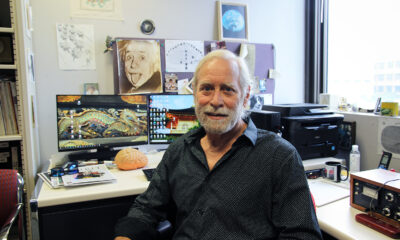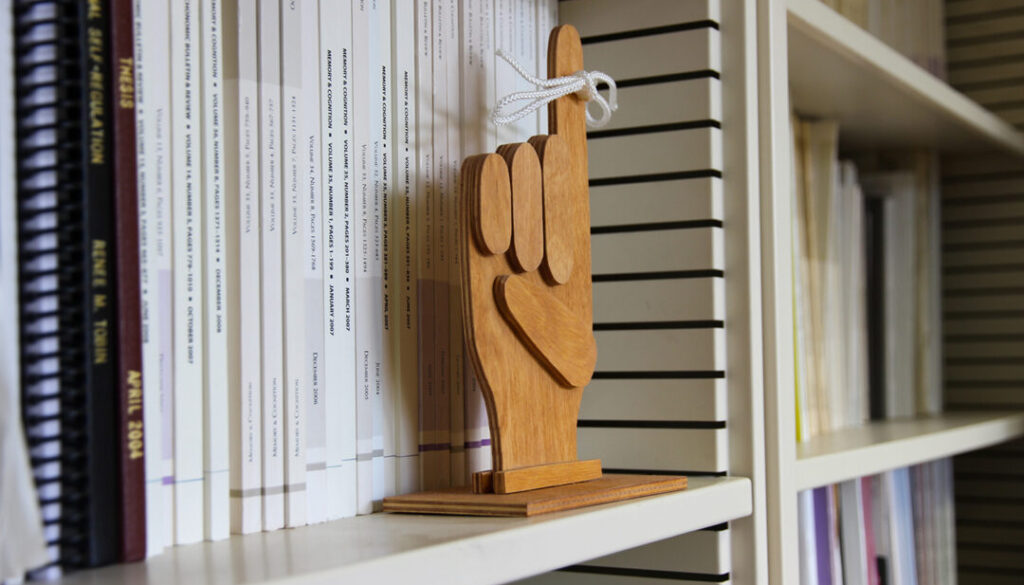Overcoming Creative Problem-Solving Blocks
You’re baking a pumpkin pie on Thanksgiving morning. Suddenly, you realize you forgot to buy one very important ingredient — canned pumpkin. All the grocery stores within reasonable driving distance are closed. You’ve got a problem that requires creative problem-solving.
Steven Smith, a College of Arts and Sciences professor at Texas A&M University who researches memory, metacognition and creative cognition in the Department of Psychological and Brain Sciences, leads the field in studying creativity and creative problem-solving. Some of his findings would likely come to light during our hypothetical Thanksgiving scenario.
“Creative problem-solving is one type of creative activity, and it’s a really common one that takes a lot of forms,” Smith explained. “My background is in human memory. I really study forgetting, and I’m really an expert at that. I also study something like forgetting in creative thinking and creative problem-solving. For me, it’s just an extension. The memory and creativity part of it are pretty much the same.”
Melons, Memories & Motivations
Smith uses empirical science in his research. He creates opportunities to study creative cognition by observing people working through problems. In one experiment, Smith observed people solving word fragments to determine if blocks in the creative problem-solving process can be caused by implicit memory, which includes experiences, culture, ideas and skills that an individual has but is not consciously aware of.
Smith’s experiment was inspired by a similar empirical science experiment. While the original experiment concluded that implicit knowledge can help solve problems, Smith’s experiment expanded on those findings to determine that implicit knowledge can also put a creative block between problem-solvers and a solution.
In our Thanksgiving pie scenario, your implicit knowledge could remind you that canned pumpkin is made from fresh pumpkin, like the ones in your decorative centerpiece that you could repurpose. In that case, implicit knowledge helped you solve the problem. However, if your implicit knowledge of pumpkin pie was that only canned pumpkin is acceptable, you might waste time looking in your pantry for another can before admitting defeat. Here, the word “canned” is blocking you from looking at the problem creatively.
Pie-votal Moments In Creative Cognition
Smith is also interested in the connection between creative cognition and memory.
“One of the reasons I study creative cognition is because I’m interested in what creative cognition has to do with creativity itself,” Smith shared. “I’m interested in a lot of different things, but there’s kind of this big question: How does stuff come to mind? You didn’t know about it one second; now, you know about it. What’s going on there?”
Smith applies methods of memory and forgetting to creative thinking to study how ideas come to mind. His philosophy, which he refers to as the creative cognition approach, is that all types of cognition can be creative.
Back to our pie scenario: In the case of the word “canned” blocking your problem-solving, you move onto another dish. Then, you suddenly remember a Thanksgiving where you were served apple pie instead of pumpkin. You begin to tell your guests about how you connected the memory of eating apple pie one Thanksgiving to your pumpkin-pie predicament. They proceed to tell you that your memory is false; you’ve never had apple pie at Thanksgiving.
Smith’s creative cognition approach theory helps explain this phenomenon. Memory is a cognitive process, which means it has the potential to incite creativity. For this reason, Smith refers to false memories as creative memories. Memory is a cognitive process, and the act of remembering can become creative and lead to false recollections.

Incubation Effects & The Unconscious
Your switch to apple pie brings another creative cognition theory to light: You set the pie problem aside, and when your mind returned to it, your creative cognition produced a solution. Some might say you solved the problem via unconscious work; however Smith argues there are other cognitive processes at work that debunk the unconscious work theory. Smith’s work builds on reminiscence — the act of recalling a long-forgotten experience or fact.
“I knew about the so-called incubation effects,” Smith said. “You work and work on a problem. You put it aside, you try it again, and you’re more likely to get it after stepping away and coming back because you’ve just been stuck. So I tried that in a reminiscence paradigm of memory research. I found the same thing. I found the longer you delay the second test, the more extra stuff they’re going to remember. I call that an incubated reminiscence effect, or the memory effect with these implicit blocks.”
So even though your memory took some creative liberties, Smith’s work explains that your decision to put your pie troubles aside helped you overcome the implicit “canned pumpkin” mental block when your mind returned to the problem.
Practice Makes Perfect
Smith’s interest in the cognition behind these thought processes continues to fuel his research and inspires others to conduct similar research. His work may be ongoing, but some of his findings can be implemented into our routines now.
According to Smith, one way to improve learning and memory is to practice. Tasks as minor as reading a chapter in a textbook can become creative problem-solving training. The key is to practice remembering and applying the content, rather than simply reciting the words on the page. Smith also pointed out that the harder you practice, the easier it will be to apply your creative cognition skills in problem-solving scenarios.
“Rereading and practice are not the same thing,” Smith explained. “When I say ‘practice,’ I mean practice remembering. Not practice looking something up. Not practicing reading something. Practice doing the thing you’re going to get tested on.”
In our hypothetical Thanksgiving scenarios, practice may have included reading several recipes and making the pies in the weeks leading up to the holiday. In a classroom setting, you may want to sharpen your creative cognition ahead of an exam by practicing recalling and applying content covered in your classes.
Smith said the important things to do while practicing creative cognition are to practice the way you’ll be tested, measure and record your successes accurately, and increase the difficulty in your practice once you’ve achieved success at the current level.
“The harder your successful practice is, the more you get out of it,” Smith explained. “So if you just can’t remember the thing, then you look it up and say, ‘Oh, yeah!’ And then you practice again. The harder you make it, the more you ultimately get out of it. You have to test yourself often, and you have to give yourself accurate feedback.”
Learn more about Steven Smith or psychological and brain sciences research in the Texas A&M College of Arts and Sciences.
This story source was originally published by Texas A&M Arts & Sciences.
